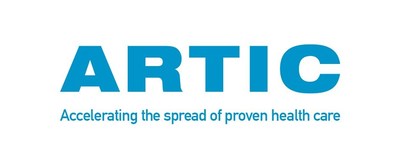New tool that helps patients manage better after leaving hospital spreads across province
TORONTO, Nov. 27, 2017 /CNW/ - An innovative and proven tool that helps patients manage their care after leaving hospital is being adopted by 27 hospitals across Ontario. The latest initiative under a provincial program that puts evidence-based care into practice faster, the adoption of this tool has the potential to benefit approximately 50,000 patients in the first year alone.

Patient Oriented Discharge Summary (PODS) is a standardized yet adaptable tool that provides patients with a set of clear and easy-to-understand instructions to follow after they are discharged from hospital. PODS aims to improve transitions from hospital, which research has shown may lead to fewer readmissions for patients, better medication adherence, improved health outcomes, and greater confidence among patients in their ability to care for themselves.
PODS was co-developed by patients, caregivers and health care providers at the University Health Network's OpenLab – a design and innovation group dedicated to finding creative health care solutions. PODS creates a discharge summary that uses plain language, large fonts, pictures and images to make the information the summary contains as easy to comprehend as possible. It's available in 15 languages and includes space for patients to take notes.
Proven in eight Toronto-area hospitals, use of PODS is now being expanded across the province with support from ARTIC (Adopting Research to Improve Care), a joint program of the Council of Academic Hospitals of Ontario and Health Quality Ontario. ARTIC is dedicated to accelerating the spread of evidence-based advances in health care throughout the province.
Being discharged from hospital can be a stressful experience for patients and their families. Patients may still be recovering from their illness or injury, and they and their families are often anxious about their condition and how they will manage at home. The stress can make it difficult for them to grasp instructions from hospital staff on taking medications, watching for certain symptoms or knowing when to go to medical appointments for follow-up care.
A report by the province's Avoidable Hospitalization Expert Panel found communication of discharge instructions by hospitals was often poor because patients did not understand medical terms, were not fluent in English, were not able to memorize instructions or were too stressed at the time of discharge to absorb information.
"The transition from hospital to home can pose significant risks to patients if they have not been provided with information and instructions about the management of their care in a way they can easily understand and use," says Dr. Joshua Tepper, president and CEO of Health Quality Ontario. "By helping hospitals, patients, and their family doctors communicate effectively with each other about post-discharge care, PODS can play an important role in improving patients' health outcomes."
Hospital discharge plans are usually written for doctors and other clinicians, and not with the patient in mind. In fact, patients might not receive any written discharge summary at all when they leave hospital. But PODS has been co-designed with patients for patients. It is also completed with the patient and their family, and the patient is asked to recall and restate the instructions in their own words, to ensure they understand. A traditional, more complex discharge summary is still sent to the patient's family doctor.
"PODS provides patients with knowledge that empowers them to play a more active role in their own care," says Tai Huynh, creative director at OpenLab and project lead for PODS. "Not only does this enhance the patient experience, it may also lead to improved adherence to the care plan and better outcomes for the patient."
At the eight hospitals that tested PODS, patients' understanding improved by 9.3 per cent to
19.4 per cent in the key areas covered by the PODS template - medication, danger signals, resumption of activities, who to call with questions, and follow-up appointments. Overall, the hospitals found significant improvements in patient and provider experience.
"The positive results that have been achieved with PODS show how beneficial it can be for both patients and health care providers when patients are given a role in the development of solutions to some of the challenges they face," says Michelle Noble, Executive Director of the Council of Academic Hospitals of Ontario.
Beginning in early 2018, participating hospitals will be encouraged to expand PODS use internally through more departments, and to encourage other hospitals in their regions to use the tool. More and more patients will benefit from PODS as it becomes the model of care for the future.
About ARTIC
Co-led by the Council of Academic Hospitals of Ontario and Health Quality Ontario, ARTIC is a proven model that brings evidence-based care faster and more consistently to more people in Ontario. Supported by the Ministry of Health and Long-Term Care, ARTIC provides project teams with funding and active support over approximately two years to ensure successful implementation and sustainability of health care interventions across more Ontario health care providers.
To learn more about ARTIC and its programs and how it's improving quality of care across Ontario, please visit the websites of the Council of Academic Hospitals of Ontario or Health Quality Ontario.
SOURCE Health Quality Ontario
